You've dipped your toes into the world of Forex trading, but have you unlocked the potential of the Ichimoku Cloud indicator?
Dive into the realm of Ichimoku Cloud with the 7 Best Beginner Guides, offering you a solid foundation and practical insights into leveraging this powerful tool.
From understanding its components to applying advanced strategies, these guides hold the key to elevating your trading game.
Discover how to decode the mysteries of the Ichimoku Cloud and take your trading skills to the next level.
Understanding Ichimoku Cloud Indicator Basics
To grasp the fundamentals of the Ichimoku Cloud Indicator, delve into its five key components that play a crucial role in analyzing market trends effectively.
The Ichimoku Cloud indicator offers valuable insights into support and resistance levels, trend direction, and momentum analysis. The Conversion Line, a short-term moving average, and the Base Line, a long-term moving average, help identify potential entry and exit points.
The Lagging Span, which plots the current closing price 26 periods back, aids in confirming trend direction. Leading Span A, projected 26 periods ahead, and Leading Span B, projecting support/resistance levels over 52 periods, provide a comprehensive view of potential market movements.
Understanding these components is essential for utilizing the Ichimoku Cloud Indicator effectively in your trading strategies.
Utilizing Ichimoku Cloud for Trading
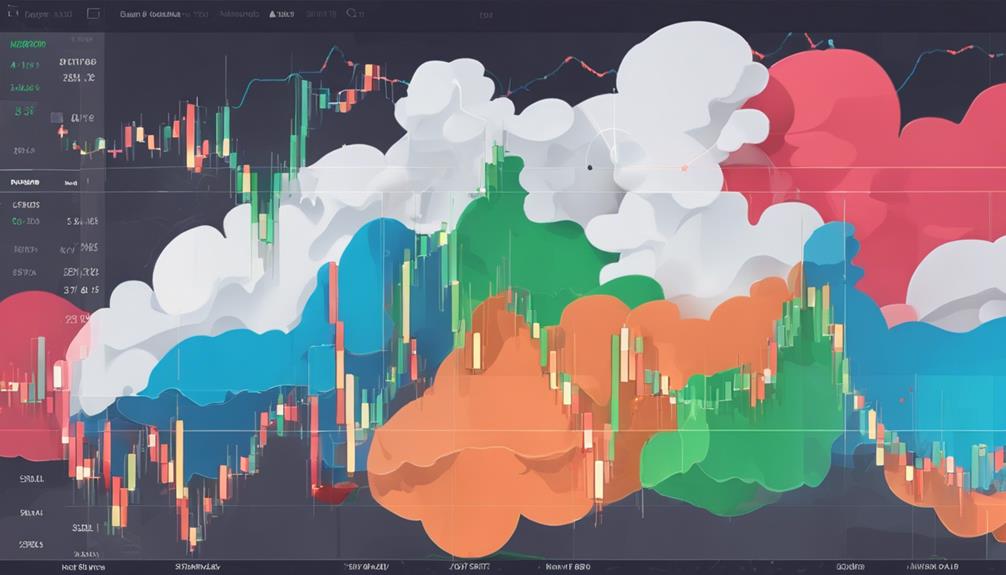
When trading with the Ichimoku Cloud, it's essential to understand the strategies and signals it provides.
By utilizing the various components of the Ichimoku Cloud, you can identify potential entry and exit points in the market.
Keep an eye out for crossovers and the interaction between the different lines to make informed trading decisions.
Trading With Ichimoku Cloud
By utilizing the Ichimoku Cloud indicator for trading, you can effectively identify trends and key support/resistance levels in the market. The Conversion Line and Base Line offer early signals for momentum shifts, aiding in decision-making.
Leveraging the Cloud as a dynamic support/resistance zone enhances your trade analysis, providing valuable insights into potential price movements. Crossovers between the Conversion Line and Base Line can indicate upcoming trend changes, allowing you to adjust your trading strategies accordingly.
Real-world examples, such as analyzing trends in specific currency pairs, demonstrate the Ichimoku Cloud's efficacy in trading. Remember, staying informed about trend direction, momentum, and support/resistance levels is essential for making well-informed trading decisions.
Strategies for Ichimoku
Strategically utilizing the Ichimoku Cloud indicator can significantly enhance your trading approach by providing comprehensive insights into trend direction and potential market reversals.
When employing the Ichimoku Cloud strategy, traders focus on key components like the Conversion Line, Base Line, and Cloud to identify support and resistance levels for making informed trading decisions.
This approach allows for the interpretation of trade signals and early detection of potential trend reversals.
By integrating the Ichimoku system with tools such as the Relative Strength Index (RSI), traders can further improve the accuracy and robustness of their trade signals.
Implementing these trading strategies effectively can help maximize the benefits of utilizing the Ichimoku Cloud indicator in your trading endeavors.
Ichimoku Cloud Signals
To optimize your trading approach with the Ichimoku Cloud indicator, understanding how to interpret Ichimoku Cloud signals is essential for making informed decisions in the market.
- Ichimoku Cloud signals are based on the interaction of its components, such as the Conversion Line, Base Line, and Cloud boundaries.
- The Tenkan crossing above the Kijun signals a bullish trend, while the opposite indicates a bearish trend.
- Traders use Ichimoku Cloud signals to determine trend strength, support/resistance levels, and potential entry/exit points.
- The Lagging Span confirms the price trend, while the relationship between Leading Span A and B indicates market momentum.
Utilizing Ichimoku Cloud signals enhances trading strategies by providing a comprehensive view of price action dynamics.
Ichimoku Cloud Strategies for Beginners

When delving into Ichimoku Cloud strategies as a beginner, understanding the key components like the Conversion Line, Base Line, Leading Span A, and Leading Span B, along with their interactions, is crucial for effective trend analysis and decision-making in trading.
The Ichimoku Cloud can help you identify trend direction, support and resistance levels, and potential entry/exit points. Paying attention to crossovers between the Conversion and Base lines is essential as they can signal shifts in market trends.
The dynamic nature of the Cloud allows beginners to visualize price movements, aiding in making informed trading decisions. By practicing with Ichimoku Cloud, you can gain confidence in using this indicator for developing effective trend analysis and trading strategies.
Key Components of Ichimoku Cloud
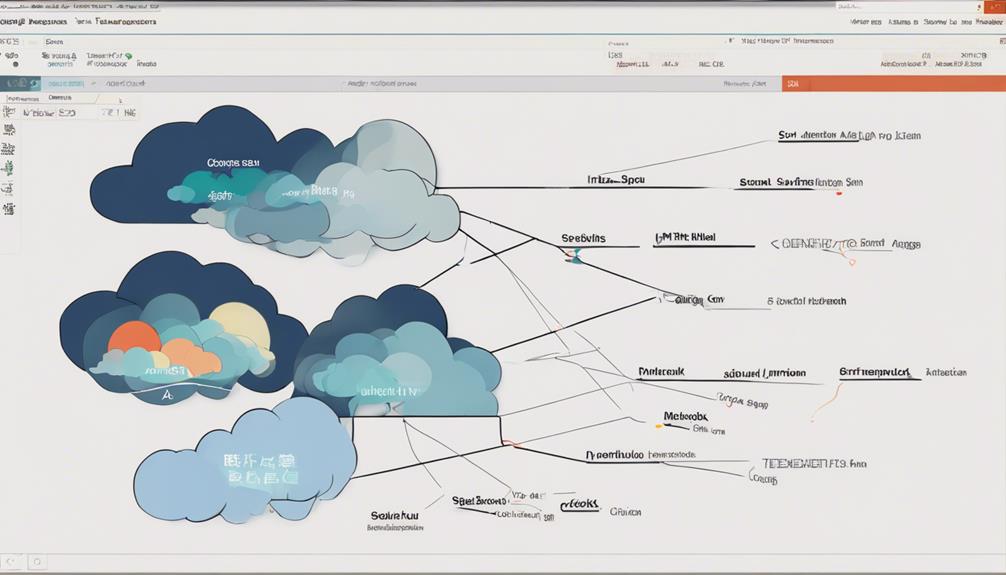
Understanding the key components of the Ichimoku Cloud is fundamental for effectively utilizing this indicator in market trend analysis and trading decisions. When exploring the Ichimoku Cloud, remember these essential components:
- Conversion Line (Tenkan-Sen) and Base Line (Kijun-Sen): Provide short-term and long-term moving averages for trend analysis.
- Lagging Span (Chikou Span): Reflects the current closing price 26 periods back, offering insights into price momentum.
- Leading Span A (Senkou Span A): Helps identify trends by plotting the midpoint between the Conversion Line and Base Line 26 periods ahead.
- Leading Span B (Senkou Span B): Calculates support and resistance levels over 52 periods, aiding in making informed trading decisions.
Understanding these components is crucial for leveraging the Ichimoku Cloud effectively in analyzing market trends and executing trading strategies.
Ichimoku Cloud Indicator Settings
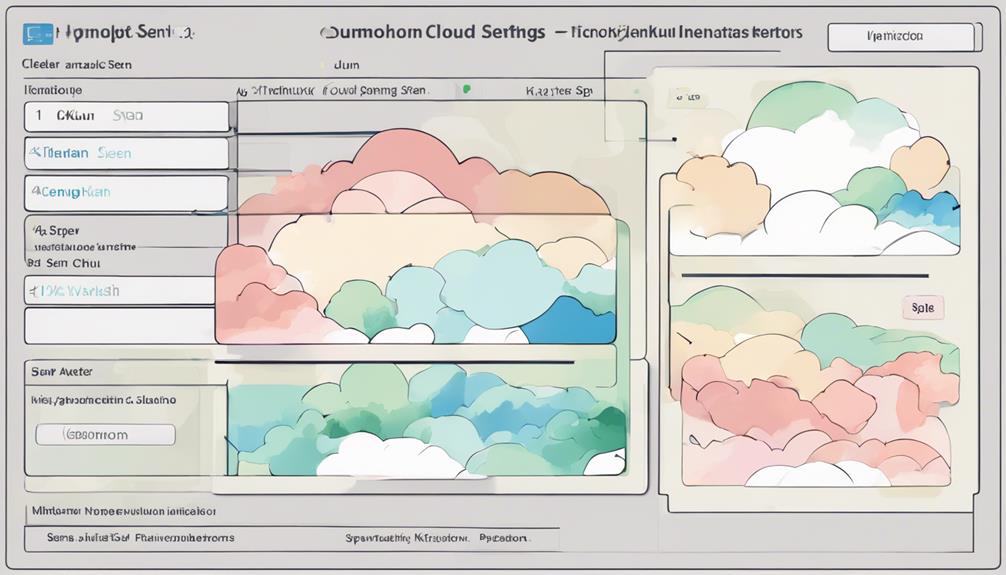
When fine-tuning Ichimoku Cloud indicator settings, consider optimal parameter values and adjusting time periods for its components.
By customizing these settings, you can align the indicator with your trading style and preferences.
Experimenting with different period lengths empowers you to enhance signal accuracy and effectively navigate various market trends and timeframes.
Optimal Parameter Values
To achieve a balanced view of short-term, medium-term, and long-term price movements using the Ichimoku Cloud indicator, traders typically set the optimal parameter values at 9, 26, and 52 for the Tenkan-Sen, Kijun-Sen, and Senkou Span B, respectively. These values play a crucial role in determining the sensitivity of the indicator and aiding in trend identification.
Here are some key points to consider:
- Shorter parameter values lead to more responsive signals.
- Longer parameter values help smooth out signals for trend identification.
- Experimenting with different values can help align the indicator with your trading style.
- Understanding the impact of parameter values can optimize your trading strategies effectively.
Adjusting Time Periods
Adjusting the time periods of the Ichimoku Cloud indicator allows traders to customize the sensitivity of the indicator to price changes according to their trading preferences and style.
By changing the number of periods, you can customize the default time periods of 9, 26, and 52 for the Conversion Line, Base Line, and Leading Span B. Shortening the time periods makes the indicator more sensitive, offering precise signals, while lengthening them can smooth out signals.
Experimenting with different time periods lets you optimize the Ichimoku Cloud for your specific trading strategies. Customizing time periods is crucial for tailoring the indicator to your trading style and maximizing its effectiveness in generating actionable insights for your trades.
Practical Applications of Ichimoku Cloud
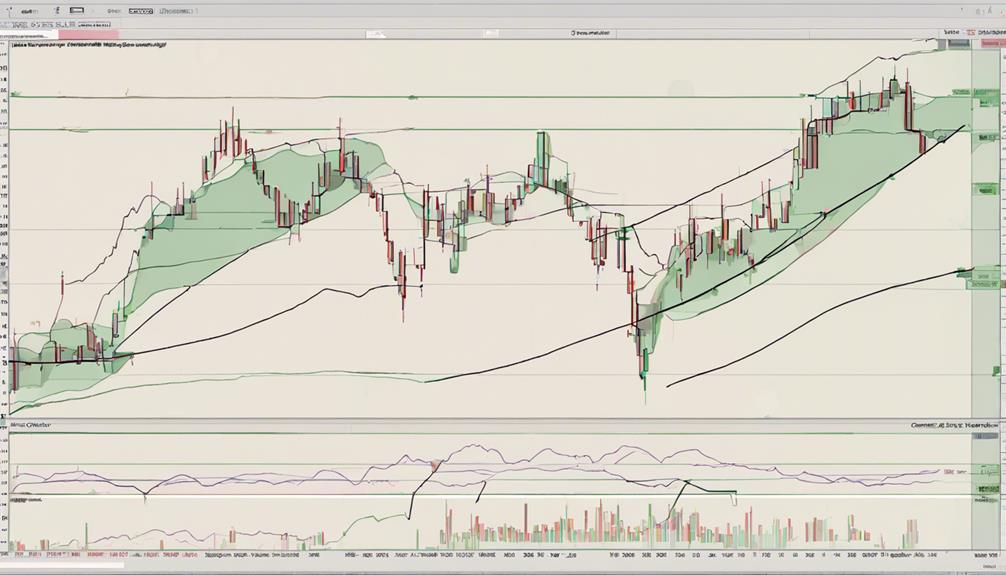
Harness the power of Ichimoku Cloud's practical applications to enhance your trading strategy and decision-making process.
- Utilize the Kumo Cloud to identify dynamic support and resistance levels.
- Watch for crossovers between the Conversion Line and Base Line for potential trend shifts.
- Confirm price movements with the Lagging Span, which plots the current closing price 26 periods back.
- Project future support and resistance levels with Leading Span A and B based on historical data.
Advantages of Ichimoku Cloud Indicator
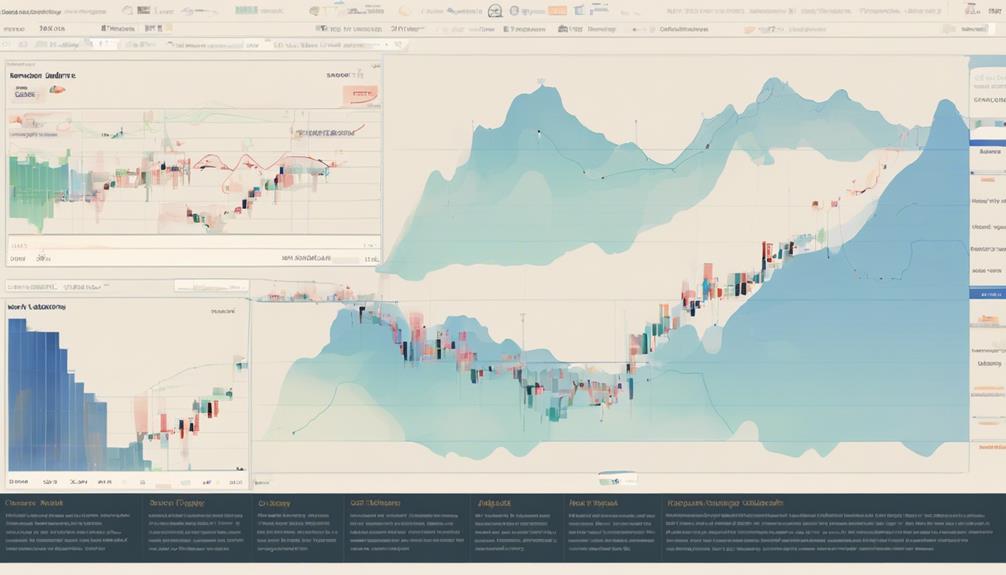
The Ichimoku Cloud indicator offers traders a comprehensive tool for analyzing price action and identifying potential trend reversals with clear visual signals. Its combination of components makes it a reliable indicator for medium to long-term trading strategies.
By incorporating elements such as support and resistance levels, the Ichimoku Cloud provides dynamic accuracy in assessing market trends. The indicator's ability to generate clear signals for trade entry and exit points aids beginners in making informed decisions.
With a focus on trend direction and reversals, the Ichimoku Cloud stands out as an effective tool for traders seeking to navigate the complexities of price action analysis in the financial markets.
Are the Beginner Guides to Ichimoku Cloud Indicator Enough to Understand its Navigation?
Are the beginner guides to Ichimoku Cloud indicator enough to understand its navigation? Learning how to navigate Ichimoku Cloud indicator tips can be challenging for new traders. While beginner guides are helpful, seeking additional resources and practice is vital to fully comprehend this complex technical analysis tool.
Frequently Asked Questions
What Is the Best Indicator for Ichimoku Cloud?
The best indicator for Ichimoku Cloud is the Tenkan and Kijun lines, crucial for trend confirmation and momentum signals. Understanding these components is essential for effective trading strategies, aiding in visualizing trends and entry/exit points.
What Is the Best Timeframe for Ichimoku?
For Ichimoku Cloud, the best timeframe depends on your trading style. Daily charts suit beginners well for trend analysis. Intraday strategies thrive on 4-hour or 1-hour timeframes. Use weekly or monthly charts for major trend shifts. Tailor to your goals and risk tolerance.
How Accurate Is Ichimoku Cloud Indicator?
Ichimoku Cloud indicator's accuracy is well-documented, offering traders reliable trend identification and reversal signals. When combined with other tools, it enhances trade precision. Historical data and backtesting affirm its effectiveness, making it a valuable asset for traders.
What Are the Best Settings for Ichimoku Cloud?
For optimal performance with Ichimoku Cloud, experiment with settings that match your trading style. Short-term traders may prefer lower periods for sensitive signals, while long-term traders might find higher periods more suitable. Tailoring settings leads to precision.
Conclusion
In conclusion, mastering the Ichimoku Cloud indicator is like having a trusted navigator guiding you through the turbulent waters of the Forex market. With its clear signals and strategic insights, this tool can help you navigate the complexities of trading with confidence.
By understanding its basics, utilizing it effectively, and implementing proven strategies, you can take your trading to new heights. Embrace the power of the Ichimoku Cloud and watch your trading journey soar to success.
